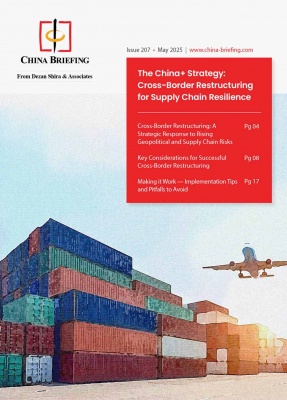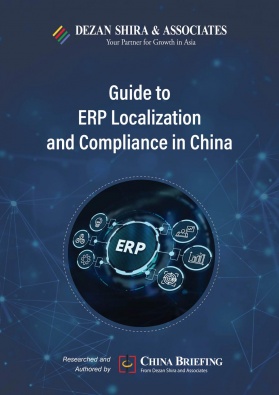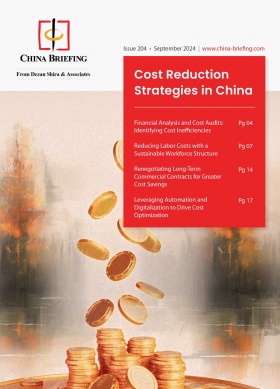China-Finland Economic Ties: Trade and Investment Highlights
- Finland holds the distinction of being the first Western nation to sign a government trade agreement with China. As China’s third-largest trading partner in the Nordic region, Finland has maintained a trade surplus with China, which has been its largest trading partner in Asia for over two decades. In 2023, China accounted for 44 percent of Finland’s global pulp exports, underscoring its significance as one of Finland’s primary export markets.
- Major Finnish corporations, including Nokia, Wärtsilä, UPM-Kymmene, Stora Enso, and KONE, have established substantial investment projects in China. Concurrently, Chinese investments in Finland have been on the rise, reflecting a deepening economic interdependence.
- Despite disparities in market size and strategic priorities, Finland and China have fostered a robust economic partnership, strengthened by stable political ties and high-level dialogues. Finland’s advanced expertise in engineering, technology, and sustainability positions it as a vital ally for China, which seeks to leverage Finnish insights across various industries.
Update (November 1, 2024): At a press conference held on November 1, 2024, China’s Ministry of Foreign Affairs announced that starting from November 8, 2024, China will implement a visa-free policy for ordinary passport holders from Finland and 8 other countries (Slovakia, Norway, Denmark, Iceland, Andorra, Monaco, Liechtenstein, and South Korea). From this date until December 31, 2025, ordinary passport holders from these nine countries can enter China without a visa for business, tourism, visiting relatives and friends, or transiting, for stays of up to 15 days.
UPDATE (October 29, 2024): In a significant diplomatic exchange, Chinese President Xi Jinping welcomed Finnish President Alexander Stubb in Beijing for discussions centered on expanding China-Finland cooperation in emerging industries. The talks, held at the Great Hall of the People, emphasized mutual opportunities in green transformation, digital economy, artificial intelligence, and new energy sectors as China continues its modernization initiatives. Xi encouraged Finland’s active involvement in these areas, expressing China’s commitment to building a “future-oriented, new-type cooperative partnership” with Finland to address shared global challenges.
One of the notable outcomes of President Stubb’s visit was China’s recent visa-free policy for Finnish citizens, aimed at facilitating travel and boosting people-to-people exchanges in tourism, business, and education.
Beyond economic and technological collaboration, Xi and Stubb addressed pressing global issues, including climate change, biodiversity, and artificial intelligence (AI) governance.
Following their meeting, multiple cooperation agreements were signed, covering education, environmental protection, circular economy, and agriculture. The two nations also launched a Joint Action Plan for the Future-oriented New-type Cooperative Partnership 2025-2029, setting the course for deepened collaboration in the coming years.
Stubb emphasized Finland’s dedication to the one-China policy and its intention to support a constructive EU-China relationship, viewing economic interdependence as crucial in navigating contemporary global shifts.
Relations between China and Finland have continued to flourish over the years, particularly in trade and investment, which form the backbone of their cooperation. Despite differences in size, geography, and global influence, both nations have established a robust economic partnership supported by stable political ties and frequent high-level dialogues.
Finland’s advanced expertise in technology, innovation, and sustainable solutions positions it as a valuable partner for China, which actively seeks Finnish insights in areas such as environmental protection, education, and reforms of state-owned enterprises. In 2023, China ranked as Finland’s fourth-largest trading partner after Germany, Sweden, and the United States. The bilateral trade volume, however, has faced new challenges, with Finnish exports to China declining by 12 percent in 2023, contributing to a growing trade deficit that now accounts for about half of the total trade volume. Despite this, key exports such as wood pulp and nickel continue to play a role in the trade relationship.
Finnish companies remain active in China, with around 250 firms operating in the market and leveraging emerging opportunities to enhance their global competitiveness. At the same time, Chinese companies like Huawei and Tencent have made significant investments in Finland, particularly in technology sectors. Helsinki Airport continues to serve as one of the EU’s major hubs for Europe-China air travel, reflecting the enduring importance of connectivity between the two nations.
To address economic uncertainties, Finland and China have been recalibrating their cooperation, emphasizing areas of mutual benefit while managing geopolitical risks. During Finnish President Alexander Stubb’s recent state visit, both countries signed agreements focused on green technology, health, food, education, and tourism—steering clear of more politically sensitive areas like Arctic cooperation, where Finland has shifted towards partnerships with the United States and Canada. Additionally, an agreement allowing Finnish poultry exports to China marks an important step in expanding trade opportunities. Another key development is the new engineering education partnership between Finnish universities of Applied Sciences and Tsinghua University, fostering academic exchanges with long-term benefits.
As both economies face headwinds—Finland grappling with a weaker economy and China experiencing slower growth—their evolving partnership underscores the necessity of strategic cooperation in sustainable development and technological innovation while adapting to shifting global economic dynamics.
Key cooperation areas between China and Finland
- Green economy: With climate change posing a global challenge, both China and Finland are poised to leverage their unique strengths to transition towards sustainable development. Finland’s expertise in clean technology and renewable energy aligns well with China’s ambitious goals of carbon peaking and achieving carbon neutrality. Collaborative efforts can focus on joint research, technology transfer, and the implementation of eco-friendly practices across various industries.
- Silver economy: Given the aging populations in both countries, the silver economy has emerged as a significant area of interest. Finland is recognized for its innovative approaches to elderly care, offering valuable insights and technological solutions that could aid in the development of smart elderly care systems in China.
- Transportation and connectivity: The ongoing development of transportation networks has facilitated stronger trade ties between China and Finland. Future cooperation can focus on enhancing logistical frameworks, improving connectivity through direct flights, and developing smart transportation solutions to support trade and investment initiatives.
- Digital economy: As the digital landscape continues to evolve, both countries can benefit from collaborative projects in information and communication technology (ICT). This includes sharing best practices in digital governance, cybersecurity, and developing smart city solutions, which can significantly boost economic growth and enhance the quality of life for citizens.
- Cultural and educational exchanges: Programs that promote language learning, academic partnerships, and cultural events continue to deepen ties between Chinese and Finnish societies.
- Belt and Road Initiative: Finland has not formally participated in Chinese initiatives like the Belt and Road Initiative (BRI), although it is a member of the Asian Infrastructure Investment Bank. Additionally, it is not part of regional groupings such as the 17+1. Nevertheless, Finland has emerged as a significant recipient of Chinese foreign direct investment in Europe, with a substantial portion of this investment concentrated on a few major acquisitions in the technology sector.
Finland’s involvement in China’s BRI: Benefits for Finnish companies
Finland’s indirect involvement in China’s BRI presents substantial business opportunities, particularly in logistics, infrastructure, and green energy. Finland benefits from growing trade routes passing through its territory, especially the China-Europe Railway Express, which relies on Finland’s railways and ports. Finland’s strategic location as a gateway to Europe enhances its role in the expanding Eurasian trade corridor.
Key Finnish ports, such as the Port of Helsinki, play a pivotal role in facilitating trade between China and Europe. Finnish companies are also increasingly engaged in projects promoting sustainable solutions, aligning with China’s green development goals. Finland’s expertise in green technology, sustainable infrastructure, and high-tech solutions positions it as a valuable partner in many BRI initiatives.
Business opportunities for Finland lie in investments in logistics infrastructure, such as rail networks and deep-water ports. Projects like the Arctic Silk Road, connecting China to Europe through Arctic shipping routes, offer promising prospects for Finnish businesses, particularly those focused on polar shipping technologies and energy exploration.
A prime example is Nurminen Logistics, which began engaging with the BRI in 2015. By leveraging Finland’s established connections with Russian and Kazakh railways, the company became the leading operator of container trains between China and Scandinavia by 2021. Its success is due to strong cooperation with Chinese, Russian, and Kazakh railway and customs officials, which improved infrastructure along the China-Europe route. As a result, Nurminen now operates 10 to 15 full trains per month, serving over 1,000 customers across Europe, and has even opened an office in Shanghai.
China-Finland bilateral trade
Finland is China’s third-largest trading partner in the Nordic region, while China remains Finland’s largest trading partner in Asia. However, Finland’s trade position with China has shifted in recent years. In 2023, Finnish exports to China declined by 12 percent year-on-year, amounting to EUR 3.56 billion (US$3.97 billion). This contraction was largely attributed to China’s subdued domestic demand and a broader slowdown in global trade, which also contributed to a 7 percent year-on-year decline in Finland’s total exports. Consequently, China is now Finland’s fifth most important export destination, accounting for 4.7 percent of total Finnish exports, down from 4.9 percent in 2022.
Bilateral trade between China and Finland remains highly complementary. Finland excels in forestry, electronics, machinery manufacturing, and metal processing, offering world-class technologies in information and communication, energy, and environmental solutions. China, as the largest developing economy, supplies Finland with high-quality and cost-effective products such as textiles, clothing, audio-visual equipment, electronics, and chemicals.
In 2023, wood pulp and paper products made up 38 percent of Finnish exports to China, followed closely by machinery and electronics at 37 percent. Notably, 44 percent of Finland’s total global fiber pulp exports were destined for China, underscoring the country’s role as a key market for Finnish raw materials.
| Main Products Exported from Finland to China, 2023 | |
| Product category | Value (US$) billion |
| Pulp of wood or of other fibrous cellulosic material; recovered (waste and scrap) paper or parts thereof | 1.3 |
| Nuclear reactors, boilers, machinery and mechanical appliances; parts thereof | 0.75 |
| Electrical machinery and equipment and parts thereof; sound recorders and reproducers, television . . . | 0.41 |
| Optical, photographic, cinematographic, measuring, checking, precision, medical or surgical . . . | 0.27 |
| Wood and articles of wood; wood charcoal | 0.15 |
| Source: ITC Trade Map, 2024 | |
On the import side, Finland’s goods imports from China contracted by 18 percent year-on-year in 2023, reaching EUR 6.92 billion. This decline was slightly steeper than Finland’s overall import contraction of 17 percent.
As a result, Finland’s trade deficit with China narrowed to EUR 3.36 billion. Machinery, equipment, and electronics continue to dominate Chinese imports to Finland, accounting for 56 percent of total imports, with electromechanical products alone making up about 30 percent. The import of textiles and vehicles from China also saw notable growth.
| Main Products Imported from China to Finland, 2023 | |
| Product category | Value (US$) billion |
| Electrical machinery and equipment and parts thereof; sound recorders and reproducers, television . . . | 2.93 |
| Nuclear reactors, boilers, machinery and mechanical appliances; parts thereof | 1.27 |
| Ships, boats and floating structures | 0.42 |
| Vehicles other than railway or tramway rolling stock, and parts and accessories thereof | 0.29 |
| Toys, games and sports requisites; parts and accessories thereof | 0.25 |
| Source: ITC Trade Map, 2024 | |
Beyond goods trade, services trade between the two countries also weakened in 2023. According to preliminary figures from Statistics Finland, Finland’s services exports to China fell by 17 percent year-on-year to EUR 1.04 billion, while imports of services from China declined by 15 percent to EUR 1.29 billion. Finland primarily exports intellectual property fees and royalties, telecom and IT services, transportation services, and business support services to China, while Finnish services imports from China mainly involve business support and transport services.
Tourism, a key sector in Finland-China economic relations, has struggled to recover from the disruptions caused by the COVID-19 pandemic. Although China ended its zero-COVID policies at the end of 2022, the number of Chinese tourists visiting Finland in the fourth quarter of 2023 was only 43 percent of pre-pandemic levels in Q4 2019. Chinese tourists accounted for just 3 percent of total overnight stays by foreign visitors in Finland at the end of last year, compared to over 6 percent before the pandemic.
Looking ahead, Finnish exporters remain cautious about prospects for recovery. According to the Confederation of Finnish Industries (EK) export barometer, 42 percent of firms engaged in international trade expect the current export slowdown to persist for at least the next six months, with one in four predicting further contraction in imports. However, 28 percent of respondents expressed optimism about improving export prospects. Major concerns for Finnish businesses include rising costs, geopolitical uncertainties, labor shortages, and ongoing logistics and supply-chain disruptions.
Despite these challenges, China remains a crucial economic partner for Finland. While Finnish exporters are navigating a weaker economy and shifting trade dynamics, opportunities continue to emerge in high-tech sectors and sustainable development, reinforcing the long-term resilience of China-Finland trade relations.
Chinese FDI trends in Finland
Chinese foreign direct investment (FDI) into Finland has experienced notable shifts in recent years, reflecting broader global trends in FDI flows.
While FDI outflow from China to Finland declined in recent years, in Finland Chinese FDI has shown resilience despite these broader challenges, such as tighter government regulations on capital outflows, weakened corporate balance sheets, and heightened scrutiny. The latest statistics indicate that Finland has become an increasingly attractive destination for Chinese investment, particularly following the collapse of Russian trade, which has prompted Chinese firms to seek new markets.
Chinese investments in Finland are notably concentrated in key sectors such as technology and renewable energy. For example, the Finnish-China Green Industry Park Forum highlighted opportunities for collaboration in areas like clean energy technologies and smart infrastructure. Additionally, Finnish companies are increasingly engaging with Chinese partners to explore innovations in sustainable technologies, further enhancing bilateral economic ties.
The potential for increased Chinese FDI in Finland remains promising. The country’s stable business environment, advanced technological landscape, and alignment with global sustainability goals position it as an attractive destination for Chinese firms looking to expand in Europe. As the demand for sustainable development and innovative technologies continues to rise, Finland could serve as a key partner for Chinese companies aiming to strengthen their presence in the European market.
Finnish FDI trends in China
Finland has emerged as a significant recipient of Chinese FDI in Europe, particularly in the technology sector, where major acquisitions have occurred.
Notably, companies like Nokia, which has been instrumental in building China’s telecommunications infrastructure, reported significant revenues from its partnerships in the region. In 2018, Nokia secured contracts worth approximately EUR 1.3 billion (US$1.45 billion) to support the rollout of 5G networks in China.
Similarly, Wärtsilä, known for its marine and energy solutions, has established joint ventures with local firms, focusing on eco-friendly technology; their collaboration has contributed to China’s goal of carbon neutrality by 2060.
Other Finnish companies, such as UPM-Kymmene and Stora Enso, have ventured into the renewable materials sector, with UPM investing around €500 million (US$557 million) in a new biorefinery in China to produce sustainable biofuels and biochemicals.
Despite Finland’s non-participation in initiatives like the Belt and Road Initiative BRI and regional groupings such as the 17+1, its strategic location and advanced technological capabilities continue to attract Chinese investors. This trend highlights Finland’s growing importance in fostering economic collaboration with China, particularly in clean technology and digital innovation, which align with both nations’ development goals.
Trade and investment treaties
China-Finland bilateral investment agreement
In 2004, China and Finland signed a bilateral investment agreement (BIT), aimed at promoting and protecting mutual investments between the two countries. This agreement fosters a stable and transparent environment for investors from both nations, contributing to economic cooperation and growth. Key provisions of the China-Finland BIT include:
- Investment protection: The agreement ensures that investments are protected from expropriation, nationalization, and discriminatory practices, guaranteeing fair treatment for investors in both countries. Compensation for expropriated assets is provided under fair market value principles.
- Fair and equitable treatment: Investors from both China and Finland are entitled to treatment no less favorable than that accorded to domestic investors or investors from any third country, ensuring fairness in the management, operation, and expansion of their investments.
- Dispute resolution mechanisms: The BIT provides a framework for resolving investment-related disputes through negotiation, mediation, or arbitration. It includes an investor-state dispute settlement (ISDS) clause that allows investors to seek legal remedies in cases of disputes.
The BIT guarantees the free transfer of investment-related funds, including profits, dividends, interest, and proceeds from sales, in and out of both countries. Transfers are to be made without delay, in freely convertible currencies at the prevailing exchange rate, ensuring smooth financial flows for investors.
Moreover, the BIT facilitates the temporary entry and stay of essential personnel involved in investment projects, ensuring smooth business operations. Immediate family members are also accorded similar privileges.
Lastly, in addition to these protections, the agreement encourages further investment by providing legal assurances and reinforcing the importance of rule of law, stability, and non-discrimination. This helps create favorable conditions for business development, fostering closer economic ties between China and Finland.
China-Finland double taxation avoidance agreement
In addition to the BIT, China and Finland signed a new double taxation agreement (DTA) on May 25, 2010, which replaces the previous 1986 treaty, amended by a 1995 protocol. The new DTA, which officially took effect on January 1, 2011, is designed to prevent double taxation on income derived from both countries and aligns with the 2008 OECD Model Convention, while introducing provisions that may impact business structuring between Finland and China.
The DTA pertains to income taxes imposed by both China and Finland. In China it covers:
- The Chinese individual income tax (IIT); and
- The Chinese corporate income tax (CIT).
On the other hand, in Finland the DTA applies to:
- The state income taxes (valtion tuloverot; de statliga inkomstskatterna);
- The corporate income tax (yhteisöjen tulovero; inkomstskatten för samfund);
- The communal tax (kunnallisvero; kommunalskatten);
- The church tax (kirkollisvero; kyrkoskatten);
- The tax withheld at source from interest (korkotulon lähdevero; källskatten på ränteinkomst); and
- The tax withheld at source from non residents’ income (rajoitetusti verovelvollisen lähdevero; källskatten för begränsat skattskyldig).
The DTA introduces a reduction in withholding tax rates on dividends to 5 percent, applicable when the parent company directly holds at least 25 percent of the subsidiary’s capital. This decrease from the previous 10 percent benefits Finnish companies with Chinese subsidiaries. Similarly, the Finnish withholding tax on dividends paid to Chinese parent companies is also reduced.
The withholding tax rates under the new DTA are as follows:
- Dividends: 5 percent for parent companies holding at least 25 percent of the paying company’s capital, otherwise 10 percent.
- Interest: Set at 10 percent.
- Royalties: Ranging from 7 to 10 percent, depending on the type of royalties.
The DTA also abolishes Finland’s tax sparing provision, which previously allowed Finnish entities to credit withholding taxes on Chinese-sourced dividends, interests, and royalties. This change may increase the overall tax burden for Finnish entities receiving income from China.
Additionally, the new agreement broadens the definition of “permanent establishment” (PE), specifically affecting insurance enterprises that collect premiums or insure risks within the other contracting state, even through non-independent agents.
Capital gains provisions are also revised, allowing China to tax gains derived from the sale of shares by a Finnish resident if the Finnish seller had a 25 percent or greater ownership in a Chinese company at any time within the 12 months preceding the sale. However, this provision does not apply to the alienation of shares in Finnish companies.
Through these changes, the DTA aims to streamline tax policies between Finland and China, promoting smoother cross-border business operations.
Multilateral treaties
China and Finland, both members of the WTO, are signatories to various multilateral treaties concerning trade and investment. These include:
- The Agreement on Trade-Related Aspects of Intellectual Property Rights (TRIPS), which mandates WTO members to extend intellectual property rights to owners in any member state. It incorporates a most-favored-nation (MFN) clause, ensuring equal treatment for IP rights protection across all member countries. Additionally, it provides mechanisms for dispute resolution and compensation.
- The Agreement on Trade-Related Investment Measures (TRIMs), which prohibits the implementation of investment measures that restrict trade between members. This includes measures like local content requirements, which mandate the use of locally-produced goods or services by companies operating in a market.
- The General Agreement on Trade in Services (GATS), which grants most-favored-nation status to service providers of any WTO member, excluding governmental services such as social security, public health, education, and certain services related to air transport.
This article was originally published on September 27, 2024, and last updated on March 18, 2025.
About Us
China Briefing is one of five regional Asia Briefing publications, supported by Dezan Shira & Associates. For a complimentary subscription to China Briefing’s content products, please click here.
Dezan Shira & Associates assists foreign investors into China and has done so since 1992 through offices in Beijing, Tianjin, Dalian, Qingdao, Shanghai, Hangzhou, Ningbo, Suzhou, Guangzhou, Haikou, Zhongshan, Shenzhen, and Hong Kong. We also have offices in Vietnam, Indonesia, Singapore, United States, Germany, Italy, India, and Dubai (UAE) and partner firms assisting foreign investors in The Philippines, Malaysia, Thailand, Bangladesh, and Australia. For assistance in China, please contact the firm at china@dezshira.com or visit our website at www.dezshira.com.
- Previous Article From Carney to Poilievre: How Leadership Changes May Shape China-Canada Trade and Business
- Next Article Navigating Hong Kong’s Annual Employer’s Return: Compliance and Best Practices

























